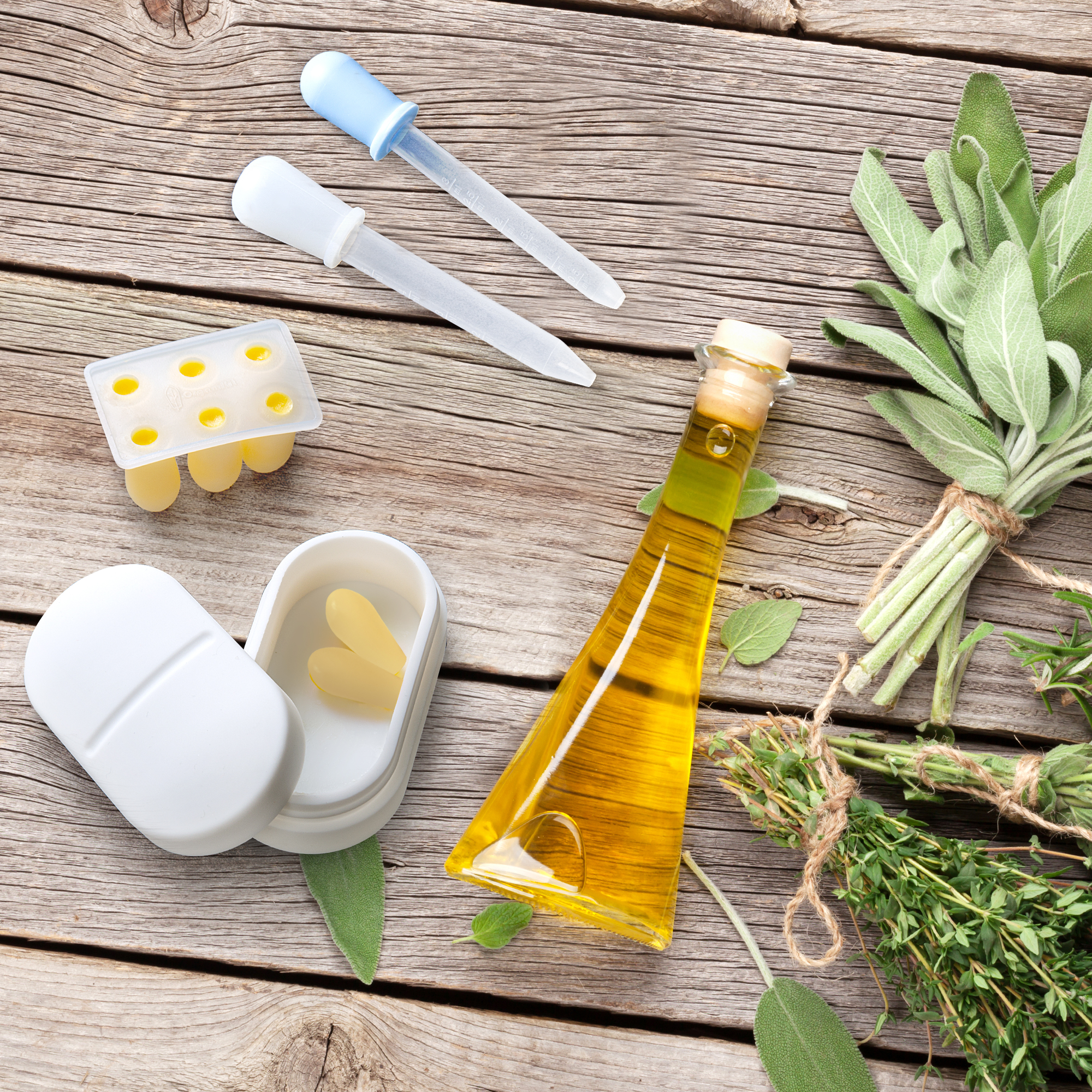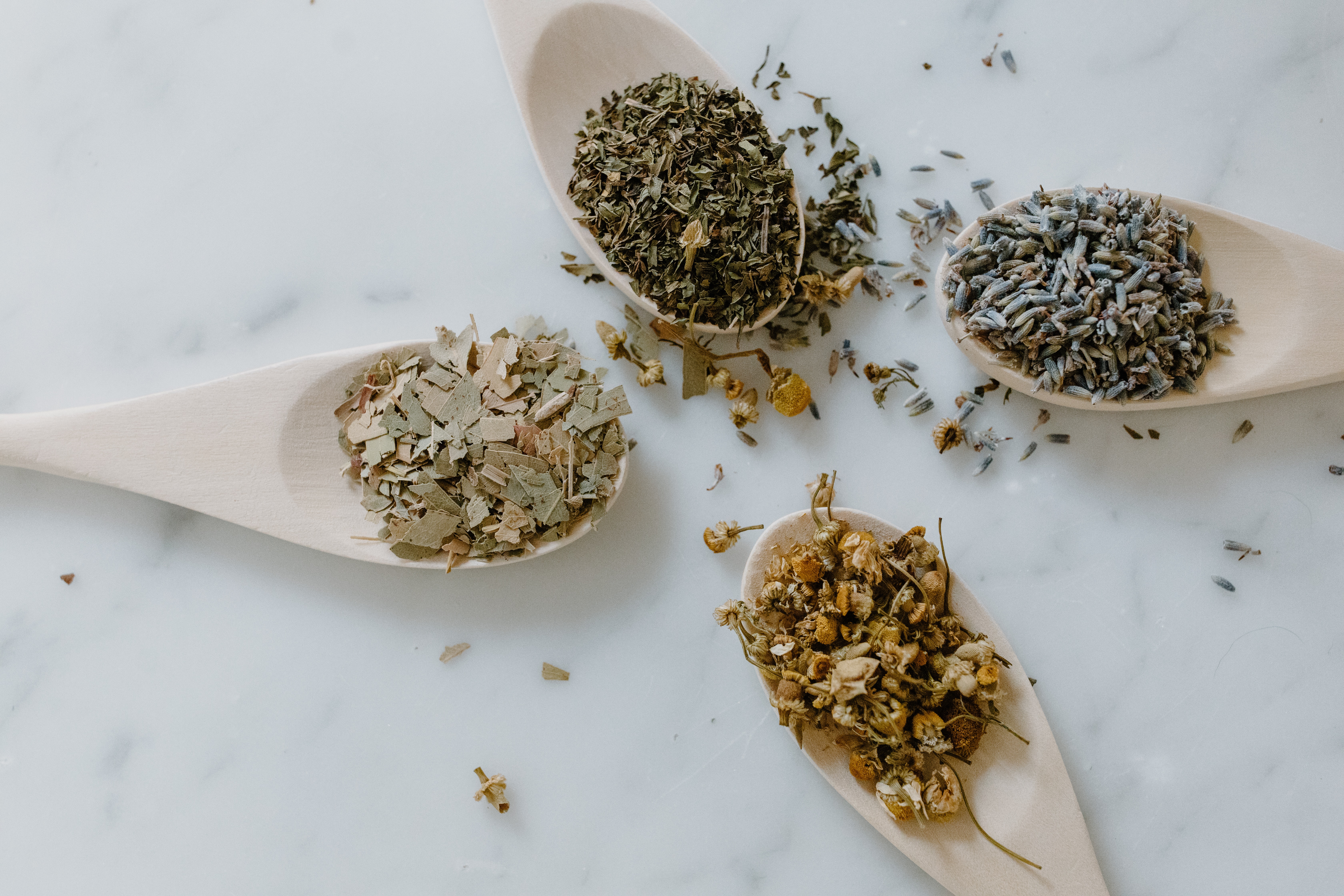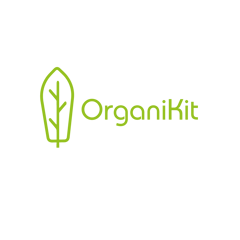How To Make Your Own Suppositories (Including Recipes)

Note: Disclaimer may be found at the end of this article.
For centuries, the healing powers of herbs have been utilized for the support, relief, and treatment of many conditions. With this background, it makes sense that applying herbs internally (i.e., vaginally, or anally) can also provide many benefits by directing treatment to the source of the problem.
Whenever a problem “down there” pops up, it’s common to feel concerned about what doesn’t feel right while also feeling embarrassed to ask for help and, thus, relief. This is where herbal suppositories can be an immense help, but it can be confusing to know what ingredients to use and why these ingredients are beneficial. Within this article, we will discuss the common ingredients for suppositories, the reasoning behind their benefits, and some recipes to try for different conditions.
All our suppositories were made using the suppository molding kit by OrganiKit, which can be found on this site, or Amazon.
Benefits of Suppositories
Compared to other methods of caring for both the vagina and anus internally, herbal suppositories are, generally, much more effective. Other approaches may work solely externally, such as a sitz bath, or they may push undesirable bacteria further into the body, such as with douching.
Herbal suppositories supply a gentle and effective way of treating internal conditions directly at the source. They provide relief and treatment for many conditions in a way that does not upset your body’s natural balance. In addition, they offer more prolonged benefits than other treatment methods.
It is very easy to prepare a suppository of your own making, and one of the primary benefits of making them yourself is controlling the ingredients that go within it. We obviously recommend the OrganiKit suppository making kit, which can be purchased on this site or on Amazon. However, the problem arises about which ingredients to include. A good rule of thumb to follow is to only use ingredients that you would feel comfortable eating. So, if it’s not something that you would feel comfortable consuming, don’t use it in your suppository recipes.
General Suppository Recipe Structure

The basic recipe for making suppositories is as follows:
¼ cup cocoa butter
¼ cup coconut oil or olive oil
1 tablespoon infused oil
2 tablespoons powdered dried herbs
To make a suppository, follow these directions:
- Combine your choice of butter and oil in a small saucepan, melting them over medium heat. Once melted and combined, turn off the heat.
- Add the infused oil and powdered herbs to the oil and butter mixture, stirring well.
- Pour the mixture into the suppository molds and refrigerate until firm. Store in the refrigerator or freezer until ready to use.
As you can see, suppositories are very customizable, and allow you to address any range of issues.
The foundation of a suppository is an oil and butter base that melts when in contact with the body. To gain the most benefit, you want to choose a soft oil and butter since they can melt easily when warmed (such as by your body) and harden when chilled (in the preparation process). In addition, these ingredients also contain moisturizing and anti-inflammatory ingredients that can provide additional support on top of the herbs included.
Yet another option is to use oils infused with herbs. However, it is important to note that these herb-infused oils use herbs at a much higher concentration, so you won’t want to use as much within the recipes. Some examples of infused oils include calendula oil and hemp oil.
When incorporating powdered herbs into the suppository recipe, it is important to use herbs that were thoroughly dried, then finely powdered. You will also want to choose herbs that address the problem you’re facing. Not sure what to use? Let’s go over the common ingredients for suppositories and the benefits they provide.
Conditions That Suppositories Can Treat

Yeast Infections
Vaginal yeast infections are a common condition, most often due to the fungus Candida albicans. The vagina already contains a plethora of yeast that is well-balanced and allows it to function as it should. However, it is possible for there to be an overgrowth of yeast, specifically Candida albicans, which can cause a yeast infection. Someone with a yeast infection experiences irritation, intense itching, and abnormal discharge.
A 2020 study on the effects of witch hazel extract found that it was able to inhibit Candida albicans, which means it stopped the fungus from growing and helped to stop the yeast infection. The study found that while many concentrations of witch hazel extract showed an inhibitory effect against the fungus, the concentration with the most significant impact was a 50 mg/mL concentration. [5]
Another herb is goldenseal, which contains antifungal components. In particular, a 2020 study found that it can inhibit the growth of Candida albicans, making it another beneficial herb for the treatment of yeast infections. [8, 9]
Suppository Recipe for Yeast Infections
¼ cup cocoa butter
¼ cup coconut oil or olive oil
1 tablespoon calendula infused oil
1 tablespoon powdered witch hazel (Also known as Hamamelis Virginiana)
1 tablespoon powdered goldenseal
Trial and Error experimentation with slightly different quantities of each ingredient will result in a more ideal suppository.
Anal Fissures
Anal fissures are a tear or rip in the lining of the anal canal, and they often result from trauma to the interior lining of the anus after passing a bowel movement. The type of bowel movement can vary; some people may develop them after passing a dry and hard bowel movement, while others develop them after having frequent loose bowel movements. Anal fissures are also more likely in those with a tight anal sphincter muscle. [6]
Aloe gel powder, derived from the aloe vera plant, is one ingredient that can help treat anal fissures. Aloe vera has significant wound healing properties, which is why it is such a common treatment for burn injuries, such a sunburn. However, its wound-healing capabilities do not end there. A 2014 study found that aloe vera decreased pain due to anal fissures and hemorrhaging and helped promote a faster recovery. [7]
One popular infused oil is calendula oil, which is a common ingredient in many soothing cosmetics such as those for sensitive skin and after-sun products. This oil is beneficial for wound healing, as proven in a 2019 review of 14 studies. Within these studies, scientists found that calendula oil decreased inflammation and increased the production of granulation tissue, meaning the individuals were healed much faster. In addition, calendula showed an ability to reduce the size of ulcers. All in all, calendula oil offers many benefits to the skin and can help speed up the healing process of any conditions affecting the quality of the skin, including anal fissures. [1]
In addition, a 2021 study proved the anti-inflammatory properties of calendula oil and how it interferes with the inflammatory pathway, decreasing inflammation. [2] With these results, calendula is a great oil to use for any condition, such as anal fissures, that results in inflammation. If you don’t have calendula oil, using calendula flower within a suppository also provides the same benefits.
Suppository Recipe for Anal Fissures
¼ cup cocoa butter
¼ cup coconut oil or olive oil
1 tablespoon calendula infused oil
2 tablespoons powdered aloe gel powder
Trial and Error experimentation with slightly different quantities of each ingredient will result in a more ideal suppository.
Bacterial Vaginosis
Similar to a yeast infection, bacterial vaginosis occurs when there is too much of one bacterium in the vagina, changing the normal balance of vaginal bacteria. Those with bacterial vaginosis may have symptoms such as:
- itching, pain, or burning in the vagina
- a thin, white or gray vaginal discharge
- burning during urination
- a strong fish-like odor
- itching around the outside of the vagina
Treatment of bacterial vaginosis should combine something that is antibacterial with something that can help with the itching and pain that occurs.
Goldenseal, in addition to its antifungal properties, also has antibacterial properties, and is a promising treatment for multi-drug resistance bacteria. [11] Another herb with anti-bacterial properties is the Oregon grape root. [10]
To help with the itching and pain that occurs in those with bacterial vaginosis, calendula oil is a beneficial addition due to its soothing properties.
Suppository Recipe for Bacterial Vaginosis
¼ cup cocoa butter
¼ cup coconut oil or olive oil
1 tablespoon calendula infused oil
1 tablespoon powdered Oregon grape root
1 tablespoon powdered goldenseal
Trial and Error experimentation with slightly different quantities of each ingredient will result in a more ideal suppository.
Menstrual Cramps
Menstrual cramps occur due to prostaglandins, a hormonelike substance that triggers uterine muscle contractions, and they are also involved in pain and inflammation. The higher the level of prostaglandins, the more severe the menstrual cramps. Hemp oil is an herb-infused oil that can help provide relief from menstrual cramps.
Hemp oil, also known as CBD oil, contains pain-relieving and anti-inflammatory properties, which helps to directly combat the effect of prostaglandins. [3] In addition, a 2019 research study tested different pain relief methods for menstrual cramps, and women felt as though CBD oil provided the greatest pain relief compared to other tactics such as stretching and yoga.
Suppository Recipe for Menstrual Cramps
¼ cup cocoa butter
¼ cup coconut oil or olive oil
1 tablespoon hemp oil
2 tablespoons powdered calendula flower
Trial and Error experimentation with slightly different quantities of each ingredient will result in a more ideal suppository.
Final Remarks
With these recipes, you can help to address many of the conditions that cause discomfort, pain, or general unpleasantness “down there”. While these recipes are a great starting point, as you become more comfortable making suppositories, you can experiment with different combinations for whatever your need is. With just a little oil, butter, powdered herbs, and/or essential oils, you can help solve that condition that has been bothering you, feeling better than ever; why not give it a try?
References
[1] Givol, O., Kornhaber, R., Visentin, D., Cleary, M., Haik, J., & Harats, M. (2019). A systematic review of Calendula officinalis extract for wound healing. Wound Repair And Regeneration, 27(5), 548-561. doi: 10.1111/wrr.12737
[2] Silva, D., Ferreira, M., Sousa-Lobo, J., Cruz, M., & Almeida, I. (2021). Anti-Inflammatory Activity of Calendula officinalis L. Flower Extract. Cosmetics, 8(2), 31. doi: 10.3390/cosmetics8020031
[3] Hammell, D., Zhang, L., Ma, F., Abshire, S., McIlwrath, S., Stinchcomb, A., & Westlund, K. (2015). Transdermal cannabidiol reduces inflammation and pain-related behaviours in a rat model of arthritis. European Journal Of Pain, 20(6), 936-948. doi: 10.1002/ejp.818
[4] Armour, M., Sinclair, J., Chalmers, K., & Smith, C. (2019). Self-management strategies amongst Australian women with endometriosis: a national online survey. BMC Complementary And Alternative Medicine, 19(1). doi: 10.1186/s12906-019-2431-x
[5] Abbas TF, Abbas MF, Lafta AJ (2020): Antibacterial activity and medical properties of witch hazel Hamamelis virginiana, Ann Trop Med & Public Health; 23(S11): SP231146. DOI: http://doi.org/10.36295/ASRO.2020.231146
[6] Anal Fissure | ASCRS . (2021). Retrieved 30 October 2021, from https://fascrs.org/patients/diseases-and-conditions/a-z/anal-fissure
[7] N, R., M, K., K, V., & S, A. (2014). Effects of Aloe vera cream on chronic anal fissure pain, wound healing and hemorrhaging upon defection: a prospective double blind clinical trial. European Review For Medical And Pharmacological Sciences, 18(7). Retrieved from https://pubmed.ncbi.nlm.nih.gov/24763890/
[8] Liu, X., Ma, Z., Zhang, J., & Yang, L. (2017). Antifungal Compounds againstCandidaInfections from Traditional Chinese Medicine. Biomed Research International, 2017, 1-12. doi: 10.1155/2017/4614183
[9] The effect of Hydrastis canadensis and Calendula officinalis homeopathic mother tincture complex on Candida albicans, in vitro. (2021). https://ujcontent.uj.ac.za/vital/%20access/manager/Repository/uj:42982?view=grid&f0=sm_creator%3A%22Subramanian%2C+Ashica%22&sort=ss_dateNormalized+desc%2Csort_ss_title+asc
[10] U, R., EM, K., K, L., W, S., & J, M. (2007). Antimicrobial activity of Mahonia aquifolium and two of its alkaloids against oral bacteria. Schweizer Monatsschrift Fur Zahnmedizin = Revue Mensuelle Suisse D'odonto-Stomatologie = Rivista Mensile Svizzera Di Odontologia E Stomatologia, 117(11). Retrieved from https://pubmed.ncbi.nlm.nih.gov/18072463/
[11] Ettefagh, K., Burns, J., Junio, H., Kaatz, G., & Cech, N. (2010). Goldenseal (Hydrastis canadensisL.) Extracts Synergistically Enhance the Antibacterial Activity of Berberine via Efflux Pump Inhibition. Planta Medica, 77(08), 835-840. doi: 10.1055/s-0030-1250606
Disclaimer
All content and media on the OrganiKit website is created and published online for informational purposes only. It is not intended to be a substitute for professional medical advice and should not be relied on as health or personal advice.
Always seek the guidance of your doctor or other qualified health professional with any questions you may have regarding your health or a medical condition. Never disregard the advice of a medical professional, or delay in seeking it because of something you have read on this Website.
If you think you may have a medical emergency, call your doctor, go to the nearest hospital emergency department, or call the emergency services immediately. If you choose to rely on any information provided by Organikit, you do so solely at your own risk.
External (outbound) links to other websites or educational material (e.g. pdf’s etc…) that are not explicitly created by OrganiKit are followed at your own risk. Under no circumstances is Orkanikit responsible for the claims of third party websites or educational providers.
If you wish to seek clarification on the above matters please don’t hesitate to get in touch with Organikit.
